7. Big Trouble in Little China (1986)
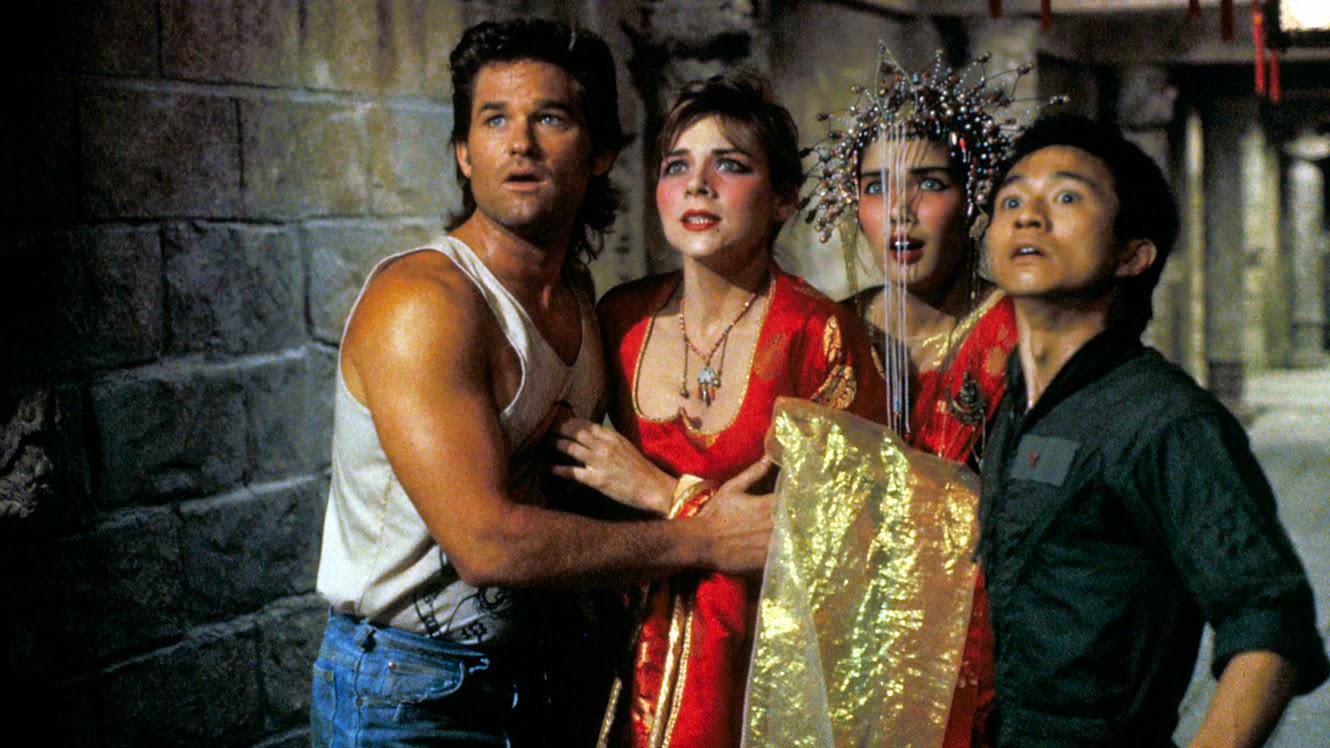
Enthusiastically described by Guillermo del Toro as “sheer pulp brilliant and dazzling magic,” and “the first of a franchise that should have been”, the trials and tribulations of the hard-boiled and fast talking trucker Jack Burton (Kurt Russell) are nearly impossible to resist. Caught in a sinister, strange, and decidedly bonkers conflict that he barely understands that’s unfolding within, underneath, and all around San Francisco’s Chinatown, Jack just can’t seem to dodge the unfolding dangers.
The silly and yet still very engrossing saga that Jack is snagged in involves a dangerous street gang called the Lords of Death, an evil sorcerer named Lo Pan (James Hong), a gorgeous green-eyed woman named Miao Yin (Suzee Pai)––fiancée to Jack’s BFF Wang Chi (Dennis Dun)––his own buddying beauteous love interest Gracie Law (Kim Cattrall), and a trio of powerful warriors under the nomenclature “The Three Storms”; Thunder (Carter Wong), Rain (Peter Kwong), and Lightning (James Pax). There’s ancient curses, martial arts action aplenty, fearsome orangutan-like monsters, and more.
A wonderful live action cartoon that sadly failed to connect with audiences at the time, partially due to the studio not marketing it appropriately or properly backing it the way it should, it’s more than fair to say that the underwhelming reaction was a crushing blow for Carpenter.
In interviews he has cited the tepid and parted reception as “the reason I stopped making movies for the Hollywood studios,” further adding: “I won’t work for them again. I think Big Trouble is a wonderful film, and I’m very proud of it. But the reception it received, and the reasons for that reception, were too much for me to deal with. I’m too old for that sort of bullshit.”
Thankfully home video editions of Big Trouble have performed well, as have deluxe Blu-ray editions, late night showings at repertory cinemas, tie-in video games, comic books, card and board games as well as constant rumors of a remake, have all added to the film’s mystique. One thing’s for certain, Jack Burton and the Porkchop Express are pop culture touchstones and their cinematic reconnaissance is easy to enjoy. A gem.
6. In the Mouth of Madness (1995)
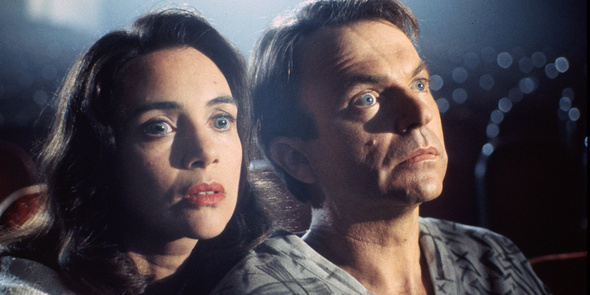
Die hard Carpenter fans know that this Lovecraftian deep cut, In the Mouth of Madness, also the third installment in the thematically bound Apocalypse Trilogy (preceded by The Thing and Prince of Darkness), is one of the director’s most marvellously realized mindfucks, a ferociously playful, and startlingly surrealist success.
But it’s not just the devout Carpenter acolytes that worship at the altar of this film, it was well regarded by the prestigious Cahiers du cinéma (where it was ranked the 10th best film of 1995), and devotees of both Stephen King and H.P. Lovecraft are appreciative of the movie’s acknowledged inspirations.
Ostensibly one wild WTF-is-going-on flashback centering on a straightjacketed John Trent (Sam Neill) explaining to his strangely laissez-faire disorders analyst Dr. Wrenn (David Warner) how he was, until recently, a successful insurance investigator. Charged with retrieving a manuscript from reclusive horror novelist Sutter Cane (Jürgen Prochnow)––an amalgam of King and Lovecraft––in what should have been a routine roundup.
Things go from strange to stranger as Trent, accompanied by Cane’s editor, Linda Styles (Julie Carmen), track the author down to a New Hampshire hamlet, Hobb’s End, which is straight out of the author’s dark imaginings. Also steeping in the sludge is an epidemic of violence somehow connected to Cane’s work and the tantalizingly terrifying prospect that maybe Cane can affect reality with his writing.
The meta-narrative about insanity is also a smart twist and, once you’ve made it to the end of this mind-bending digression you’re sure to tremble if you ever hear the words: “Do you read Sutter Cane?”
5. Escape From New York (1981)
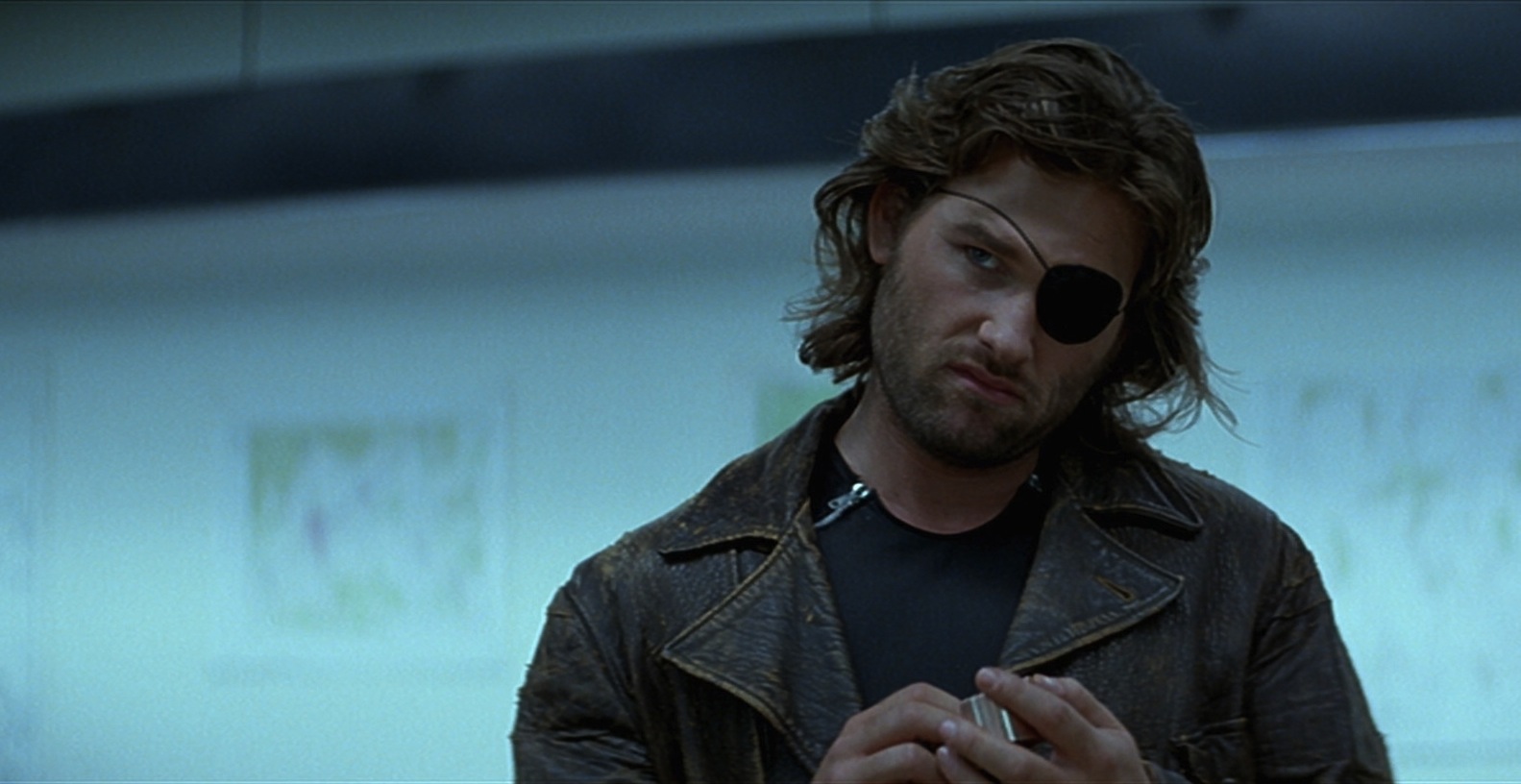
By the impossibly distant year 1997, the crime rate in the United States is so out of control that Manhattan has been evacuated of its citizens, essentially abandoned, and cordoned off into a maximum-security prison on a grand scale. Enter a hijacked and downed Air Force One over the city and a missing American president (Donald Pleasence).
The solution? Send in a dude so badass the island doesn’t stand a chance! Joyously introducing the larger than life merc antihero Snake Plissken (a scenery-chewin’ and quip-spittin’ Kurt Russell), he’s soon prowling the decaying streets of NYC to the beat of another amazing and original Carpenter score. Big city rot rocks and rolls to the director’s untethered cynical inclinations and exploitation impulses with winning results.
Aided by a game cast that also includes Adrienne Barbeau, Ernest Borgnine, Isaac Hayes, and Harry Dean Stanton, each doing an approximation of cartoonish villains, femme fatales and ne’er-do-wells, the resulting farce celebrates bad behaviour, brutality, tough guy posturing, and dystopian dalliance with a Sergio Leone flair. Seldom do apocalyptic epics unwind so enjoyably and with such escapist initiative as Escape from New York. Essential viewing.
4. They Live (1988)
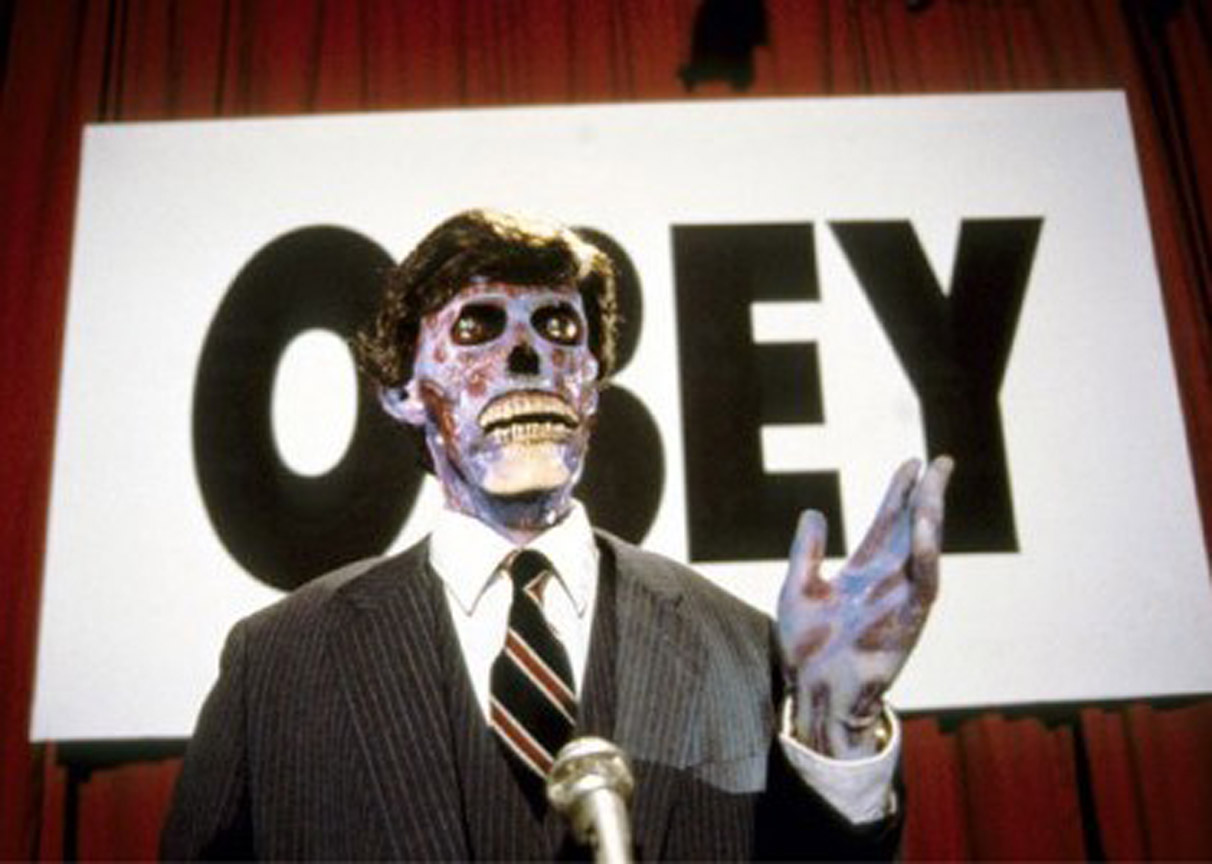
In Martin Scorsese’s summation, “They Live is one of the best films of a fine American director,” and who are we to disagree with so knowledgeable a cineaste?
Like a frenzied crash course in semiotics and media manipulation, They Live is a politically subversive B-movie combining horror and sci-fi with hair-raising results. Adapting Ray Nelson’s short story “Eight O’Clock in the Morning”, about mass alien hypnosis duping humanity via TV commercials, radio, and print media, Carpenter also steeps the proceedings in satire and casts WWF wrestler “Rowdy” Roddy Piper as John Nada, our two-fisted hero.
Nada is sympathetic and relatable as a blue-collar drifter trying to get by when he stumbles upon a pair of sunglasses that breaks the alien signal allowing their hidden messages to be visible––dollars bills suddenly read “THIS IS YOUR GOD”––along with their hidden-in-plain-sight swarms, secretly integrated amongst us. “You know, you look like your head fell in the cheese dip back in 1957,” quips Nada to an alien, giving up his element of surprise before he even knows the stakes.
They Live requires a little forgiveness from the audience as its plot holes are many, and leaps in logic are necessary to ignore as well (that ending for instance, is a little of a let down), but the film’s a shit ton of fun if you surrender to it, and Piper’s back-alley brawl with Keith David is a highlight, and certainly one of the longest and most mirthful fisticuffs in movie history, too. A can’t miss cult classic that becomes more relevant with each passing year.
3. Assault on Precinct 13 (1976)
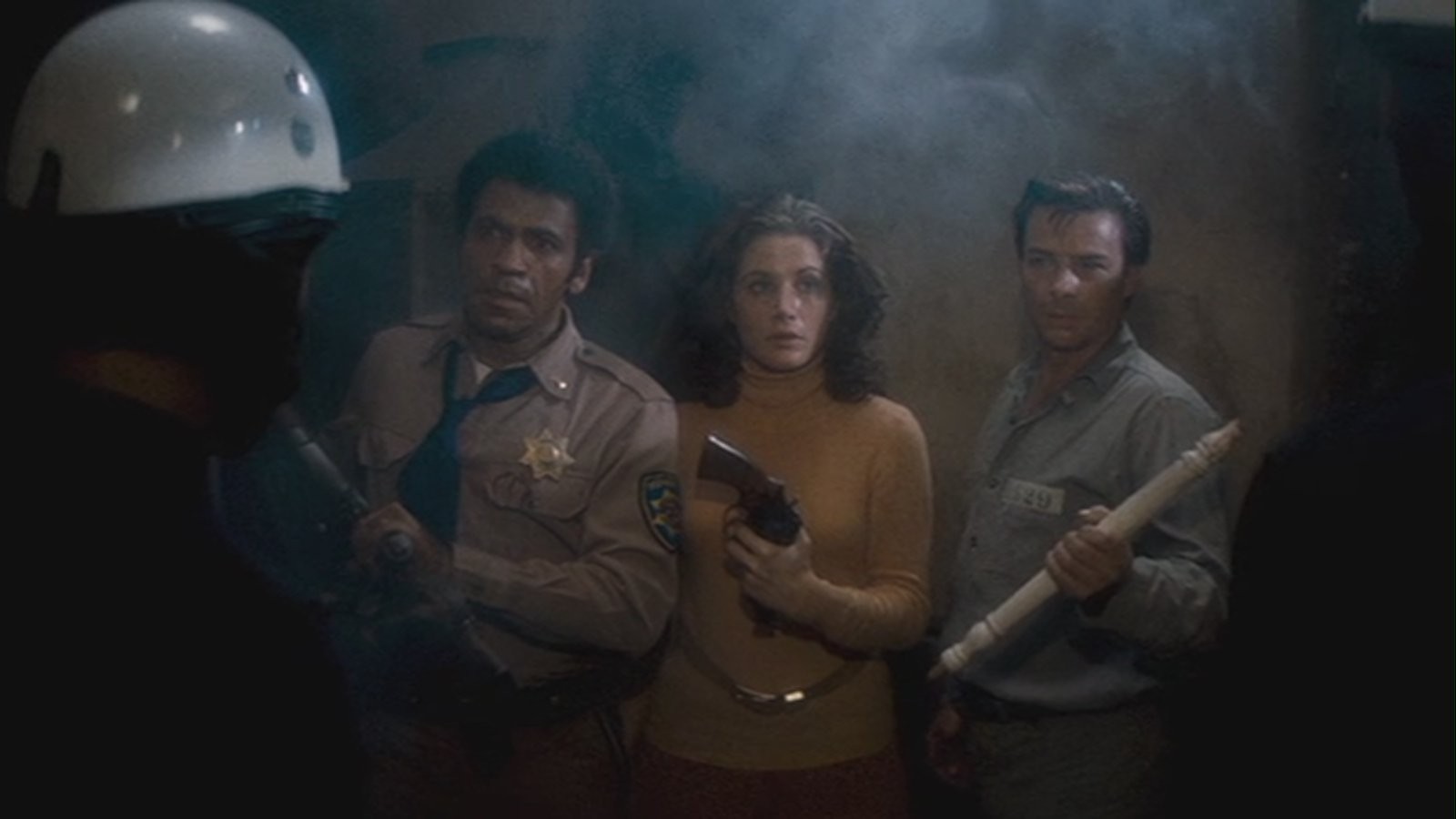
“It’s a goddamn siege,” musters Lt. Ethan Bishop (Austin Stoker) in his isolated police precinct, encircled by a brutal street gang bound by a chilling blood oath to avenge their fallen.
Carpenter’s first professional motion picture, Assault on Precinct 13 bears all of the director’s familiar hallmarks—including one of his greatest and most intense electronic synthesizer scores—making for a stylish siege thriller that links elements of both the Western and the horror genre with his developing dangerous style.
Partially inspired by exploitation cinema, and made in the midst of its mid-70s heyday, this crime-thriller doesn’t pull any punches in its violent depiction of urban violence and cultural disparity––the infamous ice cream truck child murder still shocks some 40 years on. After the L.A. police brutally massacre seven members of a don’t-fuck-with-us street gang it incites the gang members to make the aforementioned blood oath and swear vengeance via the drawn out destruction of the titular police station precinct.
Carpenter wisely and intentionally avoids any socio-political false fronts, focussing on an alternately comedic and climactic thriller that spawned a so-so remake, loads of imitators, and of course, generations of fans (Jeremy Saulnier’s thrilling 2015 urban horror Green Room is an excellent homage).
“Assault on Precinct 13 is Carpenter flexing his muscles,” says Guillermo del Toro, “revamping the archetypes of a Western and establishing his own.”
This is a film that stands not just as one of Carpenter’s finest, but one of the best actioners of its era; a joyfully deranged genre mashup par excellence, and an uncompromising cult classic like no other. The film also earns accolades for slyly supporting a subversive take on racial and sexual politics, and the results remain absolutely outstanding.
2. Halloween (1978)
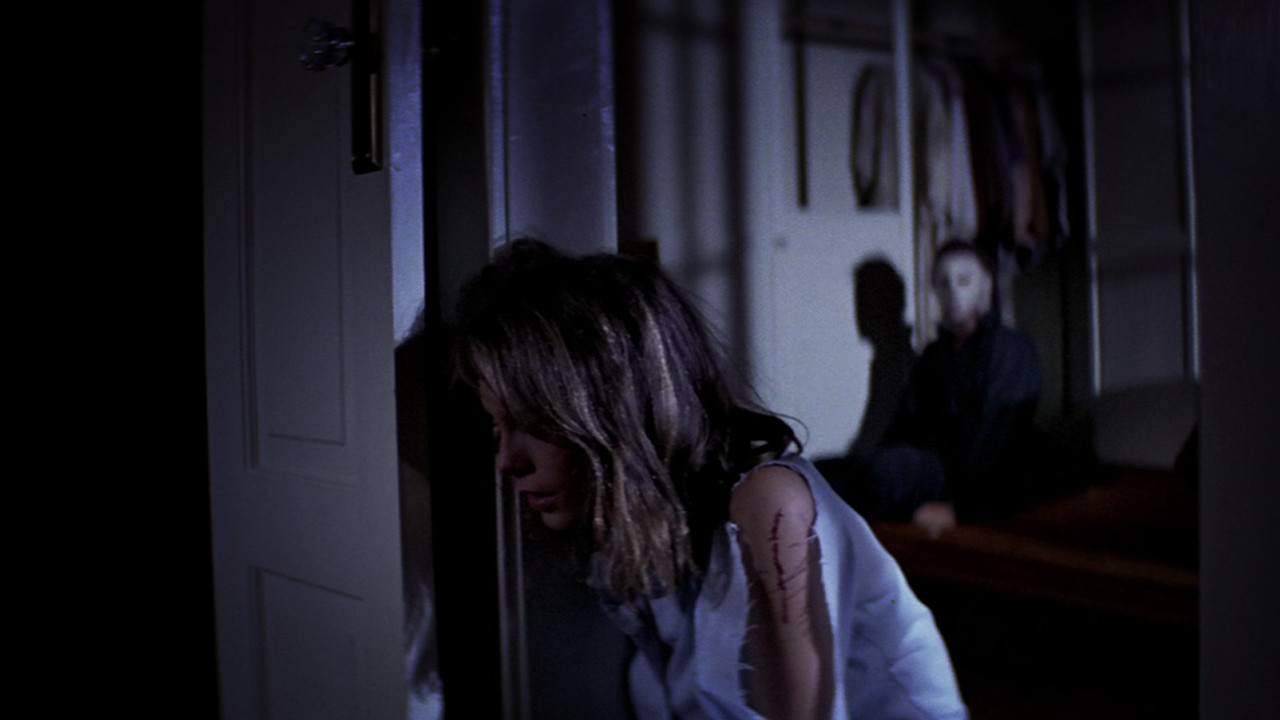
Halloween is an absolutely merciless thriller, a movie so violent and scary that, yes, I would compare it to Psycho,” raved Roger Ebert in his original review of the film, exuberantly adding: “It’s a terrifying and creepy film about what one of the characters calls Evil Personified… Halloween is a visceral experience––we aren’t seeing the movie, we’re having it happen to us.”
Few films have left such a lasting mark on the horror genre as a whole as 1978’s Halloween. Sure, there had already been a number of slasher films with nasty boogeyman-like baddies, but never quite like this. Carpenter and Debra Hill wrote the script in a scant two weeks and shot it quickly, on a shoestring budget, blissfully unawares that it would gross $100 million, becoming a massive success for such a small-scale indie.
A bare-bones plot about mental patient escapee Michael Myers (Nick Castle), donning a mask and haunting and hounding teen Laurie Strode (a then unknown Jamie Lee Curtis, soon be dubbed “scream queen” and international star) would play with predator-prey tropes to startling and authentic effect.
Carpenter, using a simplistic subjective camera, and a startling soundtrack—composed by himself as an homage to Goblin, Dario Argento’s Deep Red from 1975 had had a profound effect on Carpenter’s use of music—would stir untarnished shock value and terrible anxiety for decades to follow.
Brilliantly paced with unnerving long takes and fist-pumping confrontations between Michael and Laurie, the feeling of imminent disaster is hard to shake even long after the end credits scroll. Viscerally breathtaking and sensationally scary, Halloween’s influence and chef d’oeuvre prominence is undeniable.
1. The Thing (1982)
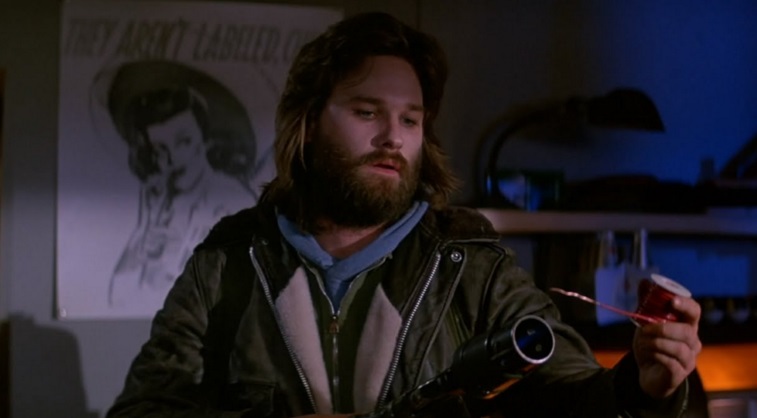
Gratuitous in its gore and relentless in its mounting mental fatigue, Carpenter’s 1982 masterpiece The Thing is an enduring and influential masterpiece of unflinching bodily invasion and cinematic terror.
Shockingly and wrongly maligned on its initial release, The Thing (a kinda sorta but not really remake of 1951’s The Thing from Another Planet) is akin to David Cronenberg in its body invasion themes, and similarly Carpenter’s use of body horror is equal parts grotesque and eerily beautiful for its surreal sweep. Both filmmakers at the time were regarded highly by horror fans but the mainstream was having a hard time digesting their unpalatable brand of gorgeous gore.
The premise is deceivingly simple: an unthawed alien stalks an Antarctic research station and could be anyone due to its shape-shifting capabilities and insatiable bloodlust. This pageant in paranoia is led by Kurt Russell’s PJ MacReady, who tears through tropes of whodunnit, horror with inky black comedy. The Thing is marvellously and hideously impressive, Carpenter expertly prolongs his literally gut-twistingly intense film––his personal favorite, and a fan favorite, too.
The Thing has, of course, over the years overcome its original critical drubbing to rightly claim its proud place as an influential, often imitated, and all around awe-inspiring spectacle. Cinematic horror is seldom this sensational. Be sure to watch it with the lights on and in company you can trust (or can you?).
In Guillermo del Toro’s previously cited tweetstorm he succinctly states, “Regarding Carpenter –– We all talk about inequalities in film. We can add up a huge one: Genre inequality. Horror will always be punk rock!”
Author Bio: Shane Scott-Travis is a film critic, screenwriter, comic book author/illustrator and cineaste. Currently residing in Vancouver, Canada, Shane can often be found at the cinema, the dog park, or off in a corner someplace, paraphrasing Groucho Marx. Follow Shane on Twitter @ShaneScottravis.